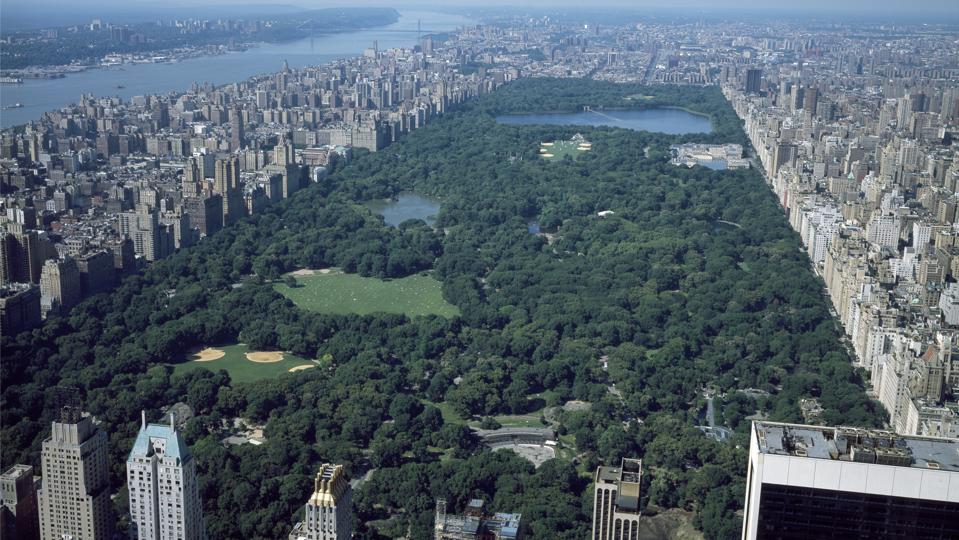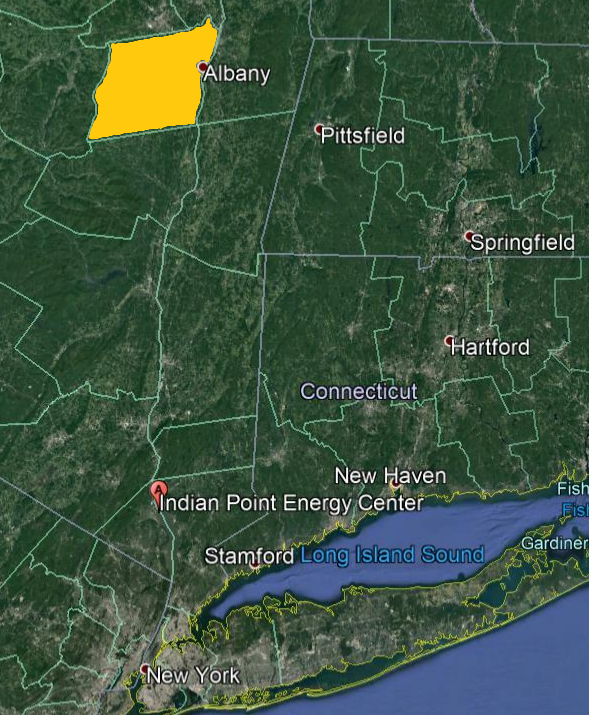This post is not about WuHanFlu, but about New York’s insane decision to close nuclear power plants in favor of wind farms. Robert Bryce writes at Forbes New York Has 1,300 Reasons Not To Close Indian Point. Excerpts in italics with my bolds.
At the end of this month, the Unit 2 reactor at the Indian Point Energy Center in Buchanan, New York will be permanently shut down. Next April, the final reactor at the site, Unit 3, will also be shuttered.

TOMKINS COVE , NY – MAY 11: The Indian Point nuclear power plant is seen from Tomkins Cove, New York … [+] CORBIS VIA GETTY IMAGES
Here are the facts: Indian Point covers 239 acres, or about 1 square kilometer. To put Indian Point’s footprint into context, think of it this way: you could fit three Indian Points inside Central Park in Manhattan.
Based on projected output from offshore wind projects (which have higher capacity factors than onshore wind projects), producing that same amount of electricity as is now generated by Indian Point – about 16 terawatt-hours per year – would require installing about 4,000 megawatts of wind turbines. That estimate is based on the proposed South Fork offshore wind project, a 90-megawatt facility that is expected to produce 370 gigawatt-hours per year. (Note that these output figures are substantially higher than what can be expected from onshore wind capacity.) Using the numbers from South Fork, a bit of simple division shows that each megawatt of wind capacity will produce about 4.1 gigawatt-hours per year. Thus, matching the energy output of Indian Point will require about 4,000 megawatts of wind capacity.
That’s a lot of wind turbines. According to the American Wind Energy Association, existing wind-energy capacity in New York state now totals about 1,987 megawatts. That capacity will require enormous amounts of land. Numerous studies, including ones by the Department of Energy have found that the footprint, or capacity density, of wind energy projects is about 3 watts per square meter. Thus, 4,000 megawatts (four billion watts) divided by 3 watts per square meter = 1.33 billion square meters or 1,333 square kilometers. (Or roughly 515 square miles.)

UNITED STATES – AUGUST 20: Aerial view of New York City’s Central Park (Photo by Carol M. … [+] GETTY IMAGES
Put another way, the 1,300 square kilometers of wind turbines needed to replace the electricity output of Indian Point is nearly equal to the size of Albany County. Would New York legislators who convene in the capitol in Albany consent to having the entire county covered in wind turbines? I can’t be sure, but I am guessing that they might oppose such plan. (See yellow area in Google Earth image at top).
These basic calculations prove some undeniable facts. Among them: Indian Point represents the apogee of densification. The massive amount of energy being produced by the two reactors on such a small footprint provides a perfect illustration of what may be nuclear energy’s single greatest virtue: its unsurpassed power density. (Power density is a measure of energy flow from a given area, volume, or mass.) High power density sources, like nuclear, allow us to spare land for nature. Density is green.
Alas, the environmental groups that are influencing policymakers in New York and in other states are strident in their belief that nuclear energy is bad and that renewables are good. But that theology ignores the greenness of density and the essential role that nuclear energy must play if we are to have any hope of making significant reductions in carbon-dioxide emissions.
In short, the premature closure of Indian Point – and the raging land-use battles over renewable energy siting in New York – should lead environmental groups to rethink their definition of what qualifies as “green.” Just because wind and solar are renewable doesn’t mean they are green. In fact, the land-use problems with renewables show the exact opposite.



Ron,
The density is one factor but the biggest is the periods when it does not blow, and needs 100% backup. What backup?
In Australia in 2016 we had a period in April for eastern Australia when wilnd worked at less than 10% for 25% of the time over a 13 day period Then of course there are the days when it works at 60% capacity – who pays for the wasted energy?
LikeLike
Thanks Genghis. Yes, the intermittancy is a further argument against this path, adding both unreliability and excess cost, even if the land were available, which it isn’t. Renewables are a virtue signal that does not scale to society’s needs.
LikeLiked by 1 person
The Health Hazards of NOT Going Nuclear, by Petr Beckmann, or Commonsense in Nuclear Energy, by Fred & Geoffrey Hoyle, are never mentioned by replacers of energy slaves with chattel slaves.
LikeLike
Ron, maybe this decision could be revisited now that one of the giants of the insane left just trashed the whole idea of “ruinables”, Mike Moore with his new movie.
LikeLike
Good idea. Toward the end, the scenes of logging off the poor ape’s forest habitat cound be enhanced by showing the land covered with windmills afterward. Maybe the ape could climb up one to try getting above it all.
LikeLike